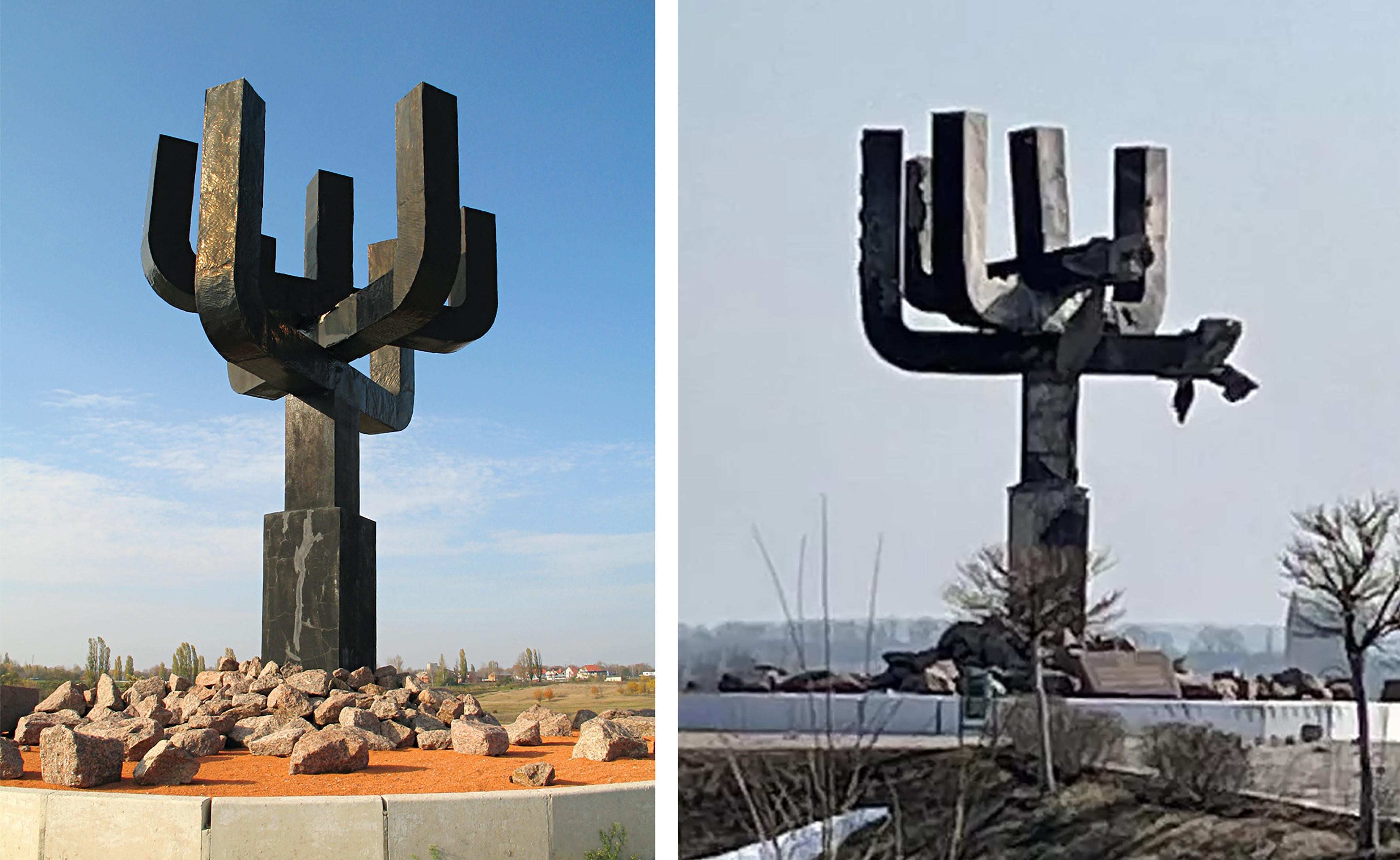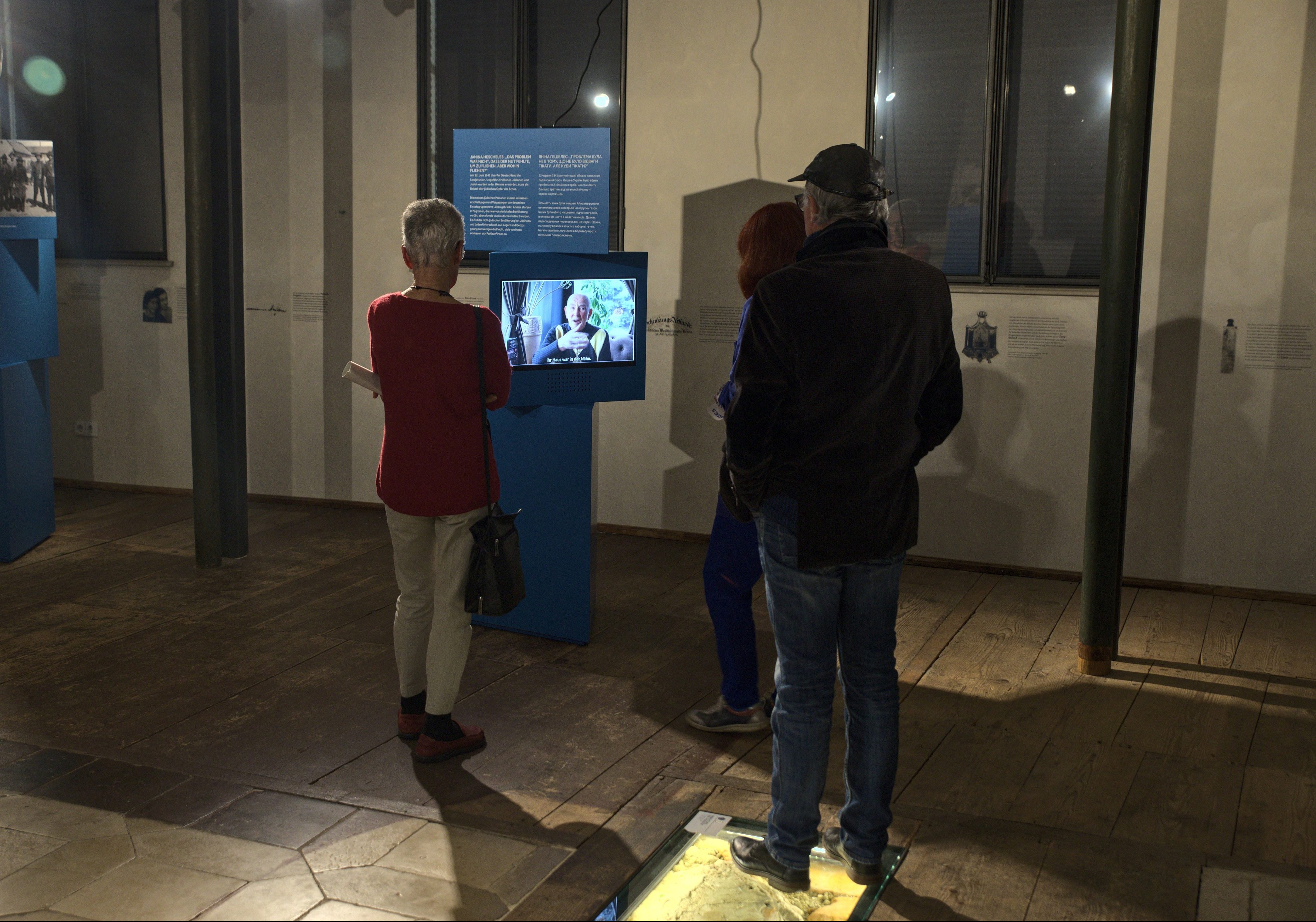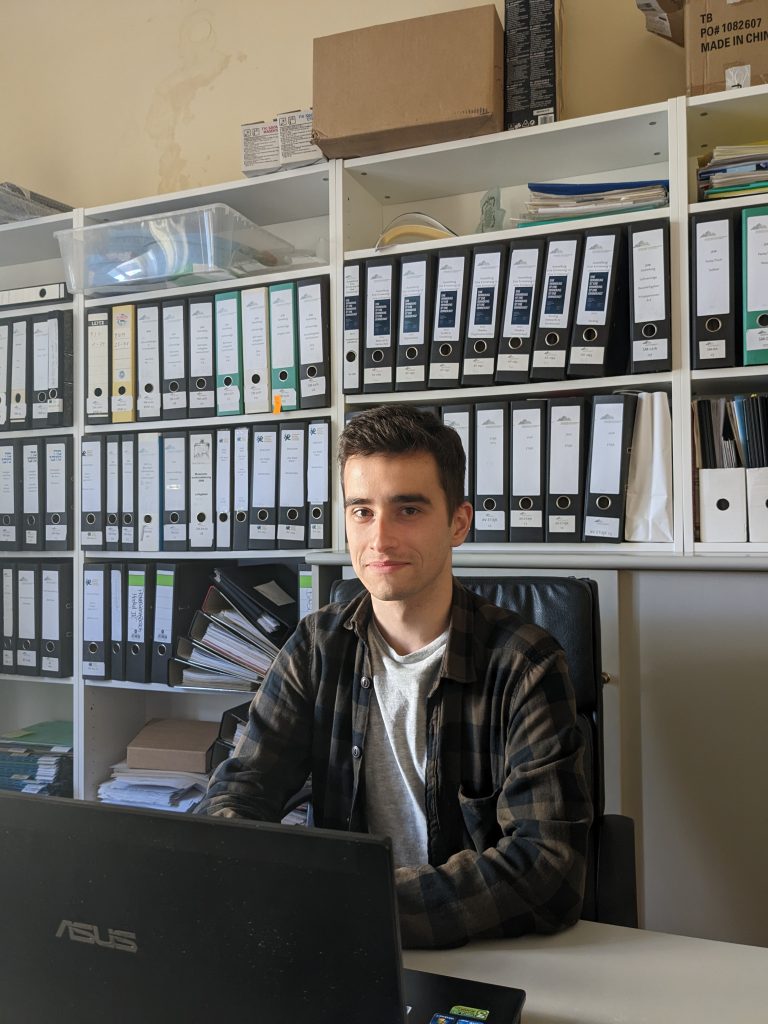Research Fellow Andrii Shestaliuk gives an insight into the making of the past special exhibition »Voices«, which sheds light on Jewish life in Ukraine and will soon be transferred to an online version
About a year ago, in June 2022, I came to the Jewish Museum Augsburg Swabia as a research fellow. Previously I had studied history and archeology in Ukrainian Catholic University and worked at the Memorial Museum of Totalitarian Regimes »Territory of Terror« in Lviv in Ukraine. Thanks to a scholarship, partially funded by the Ernst von Siemens Kunststiftung and by the Stiftung Jüdisches Kulturmuseum Augsburg, I was able to continue researching the Jewish history of Ukraine from Augsburg, a topic that is also related to the local Jewish community. About 50 percent of the community members have their roots in Ukraine.
After my arrival in Augsburg, I started working with my Ukrainian colleague Daria Reznyk on the exhibition. »Voices. A Mosaic of Ukrainian Jewish life« opened in October 2022 and covered more than a hundred years of the history of Ukrainian Jews, from the beginning of the 20th century up to the ongoing Russian-Ukrainian war.
The initial idea was to use existing interviews with eyewitnesses of various events to show the diversity of Jewish life in Ukraine through the lens of the experiences of ordinary people. Our Ukrainian partners provided the interviews: the »NGO After Silence«, the Urban Media Archive in Lviv, and Babyn Yar Holocaust Memorial Center in Kyiv. However, while working on the exhibition we realized we needed to record more interviews to make the final picture more complete. In particular, we decided to search for interviewees among Ukrainian Jews who had previously immigrated to Augsburg.

The multilingual nature of the exhibition was a challenge. The interviewees’ stories were in Ukrainian, Russian, English, and Polish. Communication with our colleagues from the Jewish Museum Augsburg Swabia was mostly in English. But the many languages used were also a great asset: To make the exhibition accessible to as many people as possible, we decided to present all texts and videos in Ukrainian, German, English, and Russian.
Another considerable issue was getting information from eyewitnesses of contemporary events. We talked to a number of our respondents from Ukraine via video calls. The recordings were conducted in harsh conditions, due to ongoing hostilities in Ukraine. It was necessary to find respondents who would be ready and willing to talk in extremely difficult conditions. For example, we recorded an interview with a psychotherapist and now a volunteer of the »Unbreakable Kharkiv« charitable foundation, when she was in the basement preparing packages with humanitarian aid for the people in the region. In another interview, Yevhen Kotliar, professor of the Kharkiv Academy of Arts and Design, shared that during the evacuation with his family to Chernivtsi they stayed in the small town of Medzhybizh. Yevhen Kotliar left his family for a while and quickly went to take pictures of the tombstones in the local Jewish cemetery, fearing that the Russian military might reach this place and destroy it.

Finally, the 16 different stories were on display at the exhibition. They illustrate the five most important periods in the history of Ukrainian Jews over the past 100 years. These are the eve of the Second World War, the Shoah, the Soviet Union, the independence of Ukraine and migration, and the Russian-Ukrainian war, which provoked many people to flee their homeland.
»Voices« was exhibited from October 2022, to February 2023, in the former prayer hall of the Former Synagogue Kriegshaber in Augsburg. Several public tours were organized in Ukrainian, German, English, and Russian during this period. Additionally several events like a concert of Ukrainian folk songs and a lecture by the German historian Franziska Davies »An Introduction to the History of Ukraine« took place. The exhibition ended with a public online discussion between researchers and representatives of the Ukrainian Jewish and Crimean Tatar communities that focused on the topic of endangered memory culture.
Currently, I continue to work on transferring the exhibition to an online format. Creating a future web platform will allow us to place all existing materials online. This way our exhibition will be accessible to the international public that could not visit it in Augsburg. In addition, it will be a great chance to add new evidence to the already existing “mosaic” and thus show the life of Ukrainian Jews in its extensive diversity.

